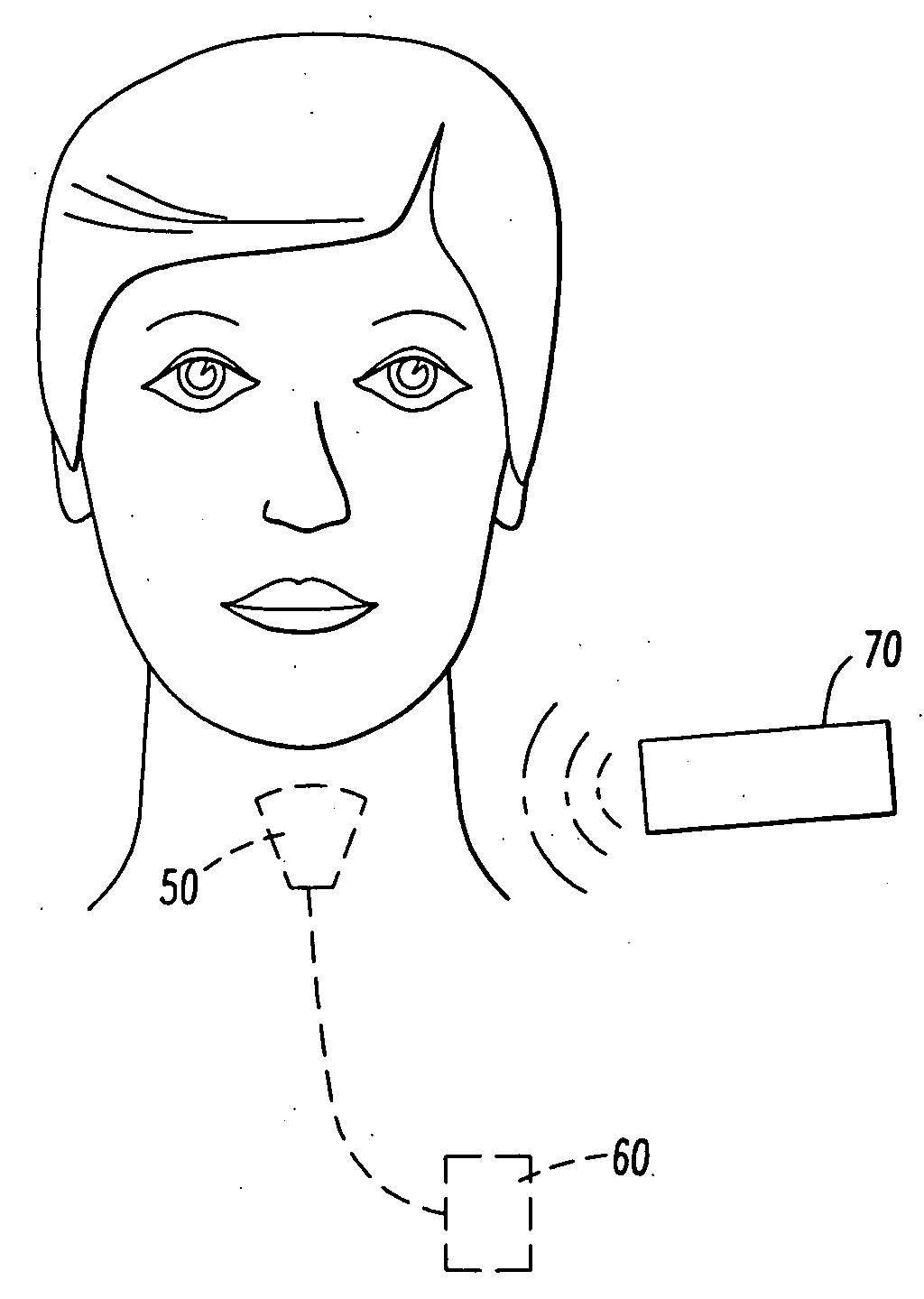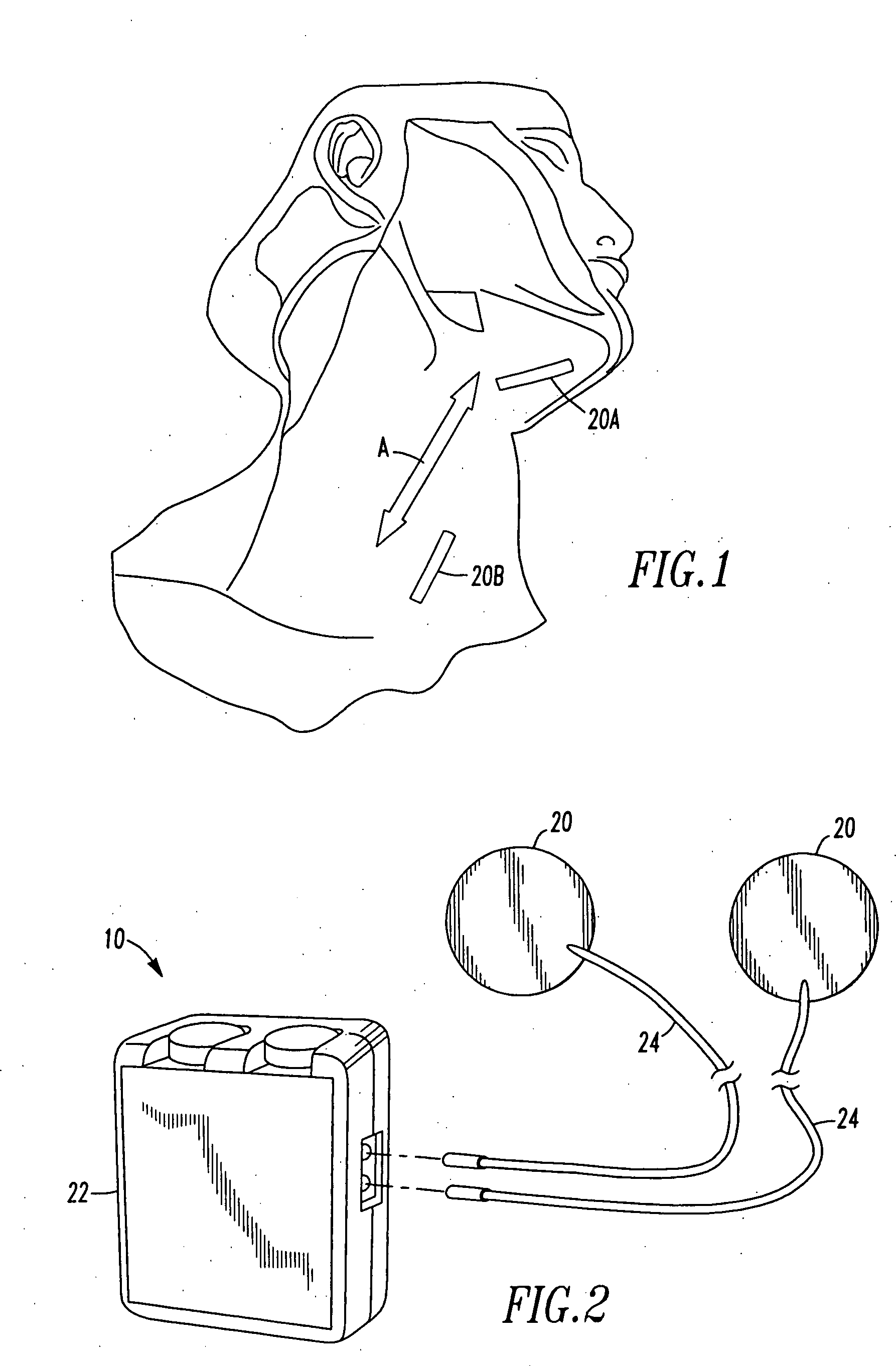Method and device for the electrical treatment of sleep apnea and snoring
a technology for sleep apnea and snoring, which is applied in the field of electrical treatment devices for sleep apnea and/or snoring, can solve the problems of serious complications and long-term effects, stroke, and pulmonary hypertension, and achieve the effect of continuous open airway and minimal discomfor
- Summary
- Abstract
- Description
- Claims
- Application Information
AI Technical Summary
Benefits of technology
Problems solved by technology
Method used
Image
Examples
Embodiment Construction
[0034] Referring to FIG. 1, in one embodiment of the present invention a portable electronic sleep apnea device includes a plurality of pads 20 disposed above the laryngeal muscles of the patient. When a person lies down, for example, to sleep, the tongue may drop to the back of the throat and the laryngeal muscles may also relax, obstructing the airway. The present invention relies upon electrical stimulation of the throat and laryngeal muscles to provide tonicity and prevent airway collapse or obstruction. Because muscles and nerves conduct electricity relatively well as compared to fat and skin, electricity is passed through the muscles making them contract. This contraction adds muscle tone preventing apnea episodes.
[0035] The device can also be used to prevent snoring. When the patient's muscles relax and the airway becomes partially obstructed the patient snores during sleep. By tightening the muscle tone, snoring is decreased significantly and even prevented.
[0036] A first ...
PUM
 Login to View More
Login to View More Abstract
Description
Claims
Application Information
 Login to View More
Login to View More - R&D
- Intellectual Property
- Life Sciences
- Materials
- Tech Scout
- Unparalleled Data Quality
- Higher Quality Content
- 60% Fewer Hallucinations
Browse by: Latest US Patents, China's latest patents, Technical Efficacy Thesaurus, Application Domain, Technology Topic, Popular Technical Reports.
© 2025 PatSnap. All rights reserved.Legal|Privacy policy|Modern Slavery Act Transparency Statement|Sitemap|About US| Contact US: help@patsnap.com



